Image: Universal
Is the "new" Poseidon's Fury better than the old? In many quantifiable ways, the answer is yes. Guest satisfaction with the attraction improved on polling and surveys, so in that way, the impossible task of reimagining an attraction in 12 weeks succeeded. And re-read the limitations at the top of this page. Did Gary Goddard and his team manage to use what they were given to solve the issues guests had with Poseidon's Fury? It seems that way...
But naturally, fans – who, at the time, knew the original show quite well – did react to the changes in mixed ways. We're lucky that Gary Goddard himself responded to criticisms of his version of the show on a fan message board. Reading his defenses to nostalgic fans is enlighting, but we'll summarize the big questions (and his answers) here:
1. Why replace the Keeper with Taylor?
Image: Kevin Davis Photography, Flickr
The switch to a young archaeologist was a smart one. It grounds our experience in a particular time (1930s, circa Indiana Jones) and provides us with someone we can relate to; someone uncovering the story along with us, speaking aloud our experience and making the journey more personal. Taylor can be funny (and yes, as some complain, annoyingly so) but he’s at the very least a better guide through the temple and a better establishing character for the attraction’s tone.
Taylor, the Global Discovery Group, and the new “excavation” set pieces also brilliantly solve the show’s lighting problem (now, archaeological lamps can reveal murals and secret messages) and provide guests the motivation or role that the former version lacked. Why are we here in this temple? Because it’s a recent discovery, and we’re globe-trotting adventurers who’ve come here for a tour! The attraction isn't happening around us; it's happening to us, because of Taylor!
(Perhaps not-so-coincidentally, the opening of the "new" Poseidon's Fury in 2001 lines up with the 2001 opening of a similar attraction at Spain's PortAventura – a park owned by Universal from 1998 to 2004. There, Templo del Fuego is the fiery antithesis to Poseidon's watery show, and the installation in Spain uses a similar archaeological set-up, characters, and effects.)
2. Why turn Poseidon into the hero and pit him against (the admittedly laughably named) Lord Darkennon?
While neither story is in any way true to mythology, Goddard argued that in the original, Poseidon wasn’t really evil (more of a ‘Disney villain;’ merely annoyed and snippy) and thus guests never faced any “real” (and thus, compelling) danger. The idea of a jealous high priest slaughtering humans to gain godlike power not only feels more true to myth, but makes him more outright evil and a more compelling threat.
And where the original version of the attraction basically spent the first two chambers with the Keeper trying to explain the convoluted story without much happening (remember, we didn’t officially meet or even hear from our hero or villain until their final battle), the new "threat” of Darkenon sets up action in each room; from the haunting spell and his awakening in the first to his attempts to kill us in the second, resulting in the Goddess’s last minute save.
3. Why reverse the “teleportation” effect?
Perhaps the biggest complaint against the updated version is that it intentionally reverses the attraction’s final effect. Rather than the vortex leading to the cavernous Chamber of Poseidon only to be “magically transported” back to the room before the vortex at the show’s close, now guests pass through the vortex and... into a room similar to the one they just left.
While it's easy to complain about the change, Goddard’s answer here, too, is enlightening. In the original, guests entered the massive Chamber under load lighting, with time to look around and see the lighting rigs, exit signs, fountains, and industrial hardware needed to run the show while a bubble effect “screensaver” made the five film screens ahead easily identifiable… a sort of illusion-shattering pause in the action while guests simply… wait.
Image: Universal
Now, guests enter into a smaller chamber that – by nature of being a duplicate of the old version’s second room – looks not exactly like the room they just left, but like yet another small, undiscovered chamber blocked by another gate they can’t open. It’s this room that guests load into, with the massive chamber being revealed only under show lighting as designed (with the clever reveal of an octopus swimming away from the windows being a spectacular reveal as light from the underwater world comes pouring in).
Sure, one could argue that positioning the transportation effect last admirably “saved the best for last” in terms of the show’s special effects, and perhaps it’s less magical to lose the overt connection of suddenly being back in a room you were previously in; but in exchange, the reveal of the larger chamber is instead much more effective and grand. Two steps forward, two steps back? We’ll let you decide.
4. Why switch the animated Zeus and Poseidon for live actors?
Image: Universal
Goddard’s answer here is that, frankly, it seemed incongruous that our live guide – the Keeper – would transform into a (1997-quality) CGI character anyway, and that it removed any realism (and any “threat”) earned by the twenty minutes preceding to have our evil villain as a cartoon merman. He’s right, but… admittedly, today’s finale, too, feels unreal, with actors in silly costumes hastily filmed in front of a green screen and superimposed over the old CGI background, with uncomfortable moments when they “reach” past the projectable screen or clash in slow-motion Renaissance Fair duels.
In other words, this is one area where a reimagining today would probably split the difference. There was definitely something compelling and creative about having Poseidon and Zeus realized as “original” and highly stylized characters (perfect for action figures, plush, and t-shirts!) that live actors in superhero-style suits misses big time. Plus, the singular moment in which the old Poseidon was projected all around guests as if through a prism was mesmerizing.
Sink or float?
Image: HarshLight, Flickr (license)
The "new" version of Poseidon's Fury – the rushed, low-budget, quick-fix reimagining by Goddard – has been playing continuously for audiences since 2001. Over the last two decades, insiders have been certain that the attraction was on the brink of closing...
First, things looked grim when the Vortex was turned off from 2008 to 2010 (supposedly as part of NBC's "Green is Universal" eco-initiative... though almost certainly just a budget-saving move during the 2008 recession).
Poseidon's Fury's future looked bleak again in 2009 when it was announced that the Wizarding World of Harry Potter would soon move in, overtaking the Lost Continent. As it turned out, Hogsmeade really replaced only the Merlinwood section of the Lost Continent, salvaging Sinbad's Bazaar and the Lost City.
Image: Universal
But in 2011, after Hogsmeade's astounding debut (increasing Islands of Adventure's attendance by an unfathomable 36% the year prior), rumors began to swirl that an expansion of the Wizarding World was imminent, likely devouring what was left of the Lost Continent to build a Diagon Alley land. And of course, Diagon Alley did open in 2014... but at the original Universal Studios Florida park, connected to Islands of Adventure's Hogsmeade by way of the clever, inter-park Hogwarts Express train.
That means that Poseidon's Fury is still safe. But is that a good thing? Surely the 12-week reimagining back in 2001 was merely a quick fix, never meant to be the final version of the show. And yet, two decades later, it's this version of Poseidon's Fury that's still playing. Don't misunderstand... Poseidon's Fury is somehow a lovable underdog. Our friends at Touring Plans hit the nail on the head by naming it one of the "Best Worst Attractions." It's cool! It's fun! It's neat! And... it's time for a fix.
What if...
Image: Tomb Raider
Given Universal's love of IP licensing, how amazing would it be to see the land and its sole remaining attraction taken in a new, exciting, adventurous direction? Perhaps the Lost Continent could become a land dedicated to Tomb Raider, placing Lara Croft in a quest to find where Poseidon's Trident was forged, and replacing the Sinbad half of the land with exotic jungles and a rebuild of the Lost Legend: TOMB RAIDER - The Ride?
For that matter, could the award-winning, mythological God of War game series power a new Poseidon's Fury, allowing guests to witness a brawl between the legendary Kratos of the Lord of the Seas?
Image: Nintendo
Most recently, rumors have suggested that Universal's licensing of Nintendo makes Zelda a contender for the Lost Continent spot, balancing with the Mario and Donkey Kong lands supposedly planned for Epic Universe. Whether Link and friends would repurpose or replace Poseidon's Fury, we can't say.
But for now and the foreseeable future, Poseidon's Fury has somehow been salvaged from sinking; it's literally the only attraction in the entirety of the Lost Continent (since the Eighth Voyage of Sinbad stunt show closed in 2017) and thus, the only original, non-IP attraction left at Islands of Adventure... We'd kill to see Universal reinvigorate this land and attraction for real. Why not involve the Eighth Wonder Expedition Company (the likewise-1930s explorer group featured on the Reign of Kong ride in the park's Skull Island) and build out a new mythology surrounding the Trident and the battle between Poseidon and Zeus?
Or is it time to let this walkthrough show sink for good?
Image: Universal
We want to hear your thoughts. What parts of the original production should've been kept, and why? In your opinion, does the 2001 rewrite save the attraction, or sink it? What pieces of the story of Poseidon's Fury should act as a cautionary tale for attraction designers today? Do you think the failure of Poseidon's Fury might've turned Universal off from epic, original character attractions for good? What does the future hold for this unusual would-be headliner?
And remember – you can dive deep into countless stories on beloved Lost Legends, uncovered Declassified Disasters, and never-built Possibilitylands in our LEGEND LIBRARY.
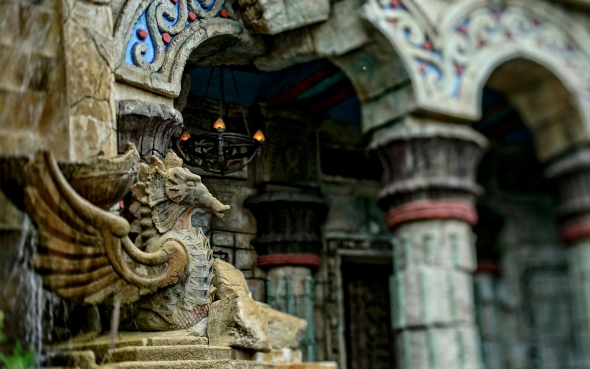
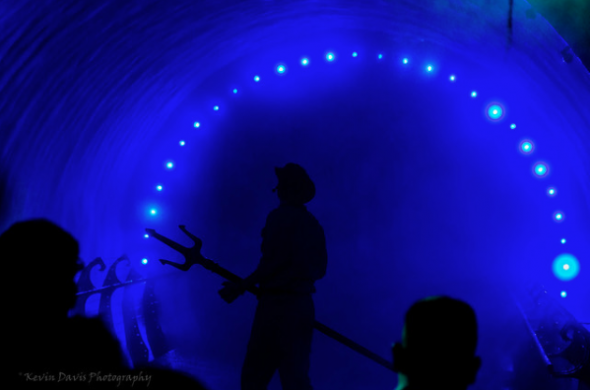
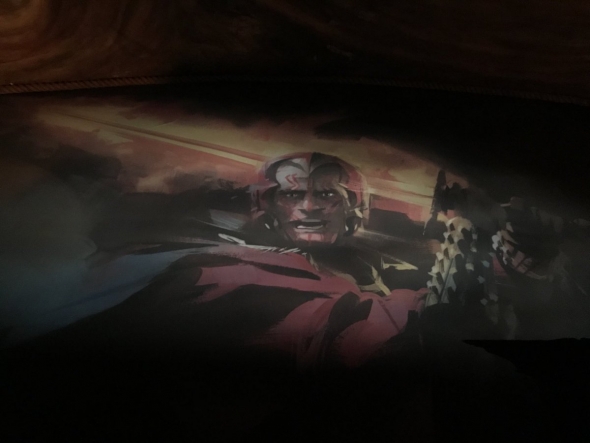
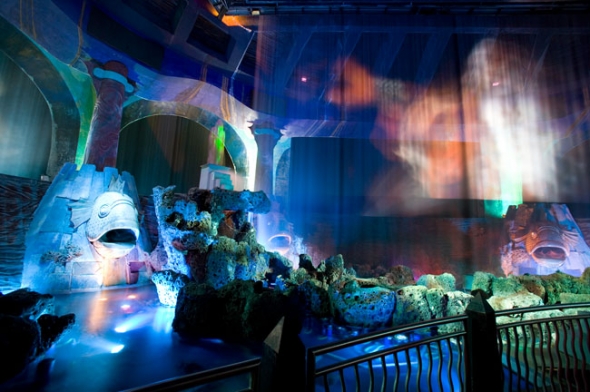
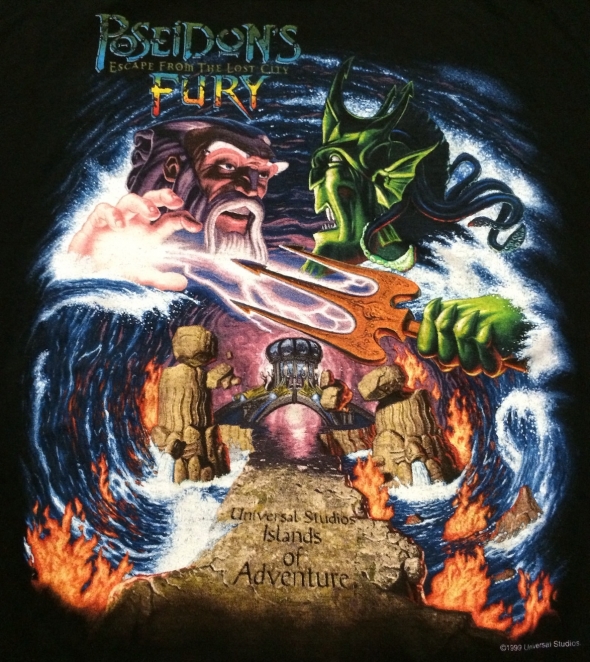
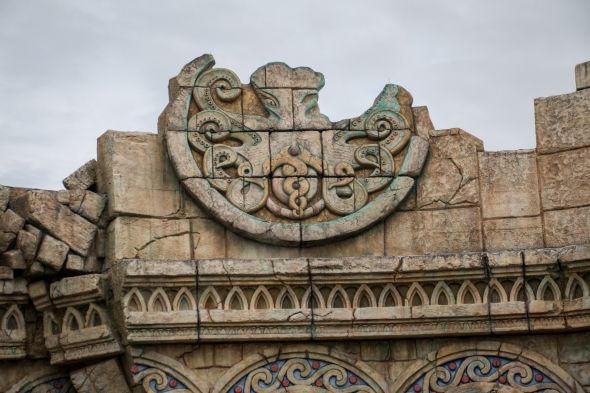
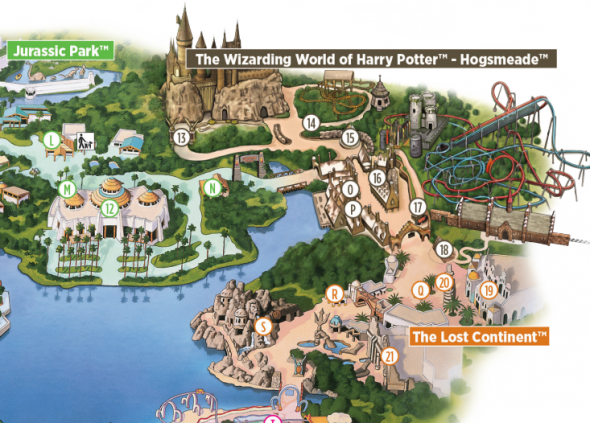
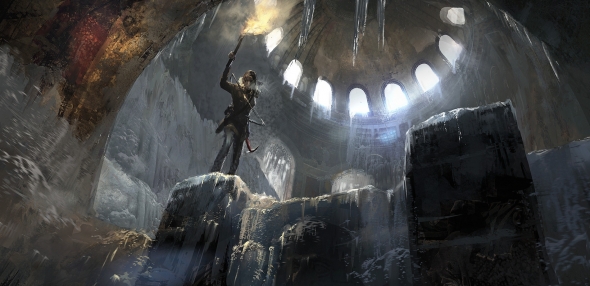
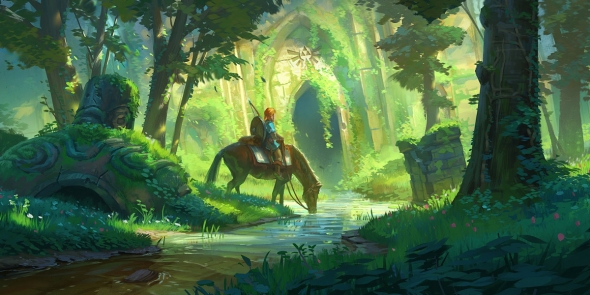
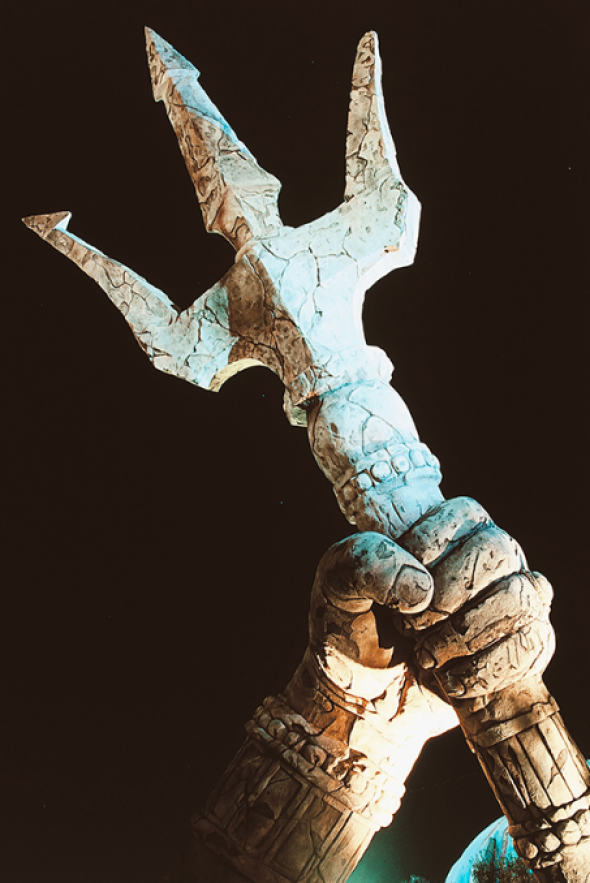

Add new comment